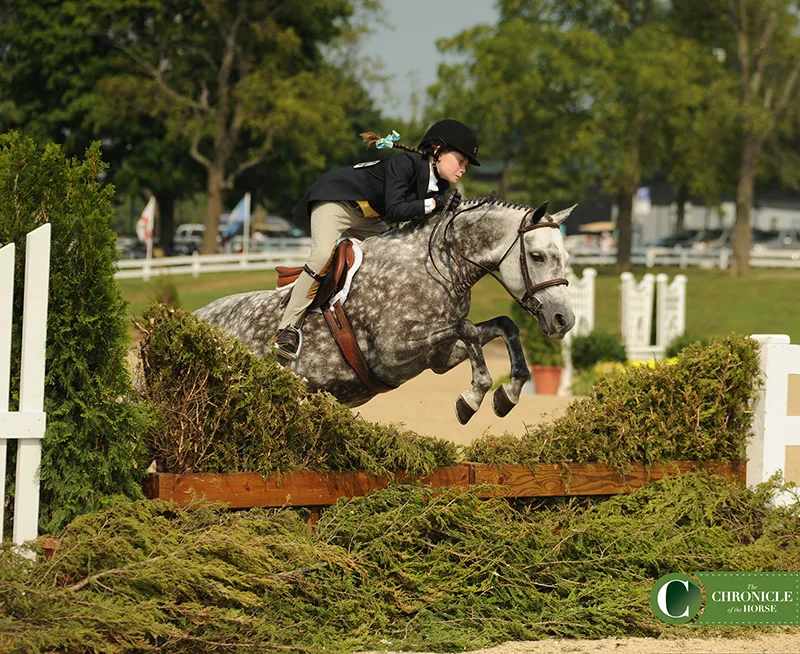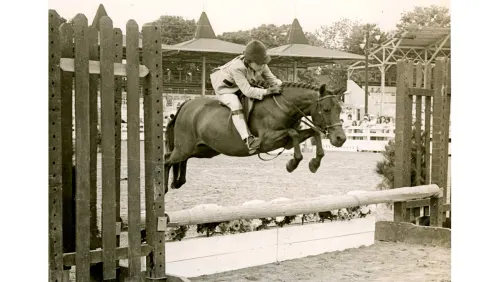Thirty-nine rule change proposals—11 more than last year—are up for discussion during the upcoming U.S. Hunter Jumper Association Annual Meeting, which takes place Dec. 12-15 in Seattle.
Rule change proposals that are approved by the USHJA board of directors at the meeting will go to the U.S. Equestrian Federation, where they must be voted on by the USEF board of directors before being enacted.
While the online comment period closes Saturday, Nov. 12, members who don’t get their opinions submitted by then can still chime in during the annual meeting.
All rule change proposals are listed on the USHJA website numerically by three-digit tracking number and include links to view or comment. Use the tracking number, listed in parentheses at the end of each description below, to find details of a specific proposal on the website.
Here’s a look at each of the rule changes being proposed at this year’s meeting, by topic area:
Safety, Welfare And Veterinary
• Requiring that the safety coordinator or show manager notify the steward or technical delegate of an accident, injury to horse or human, or collapse of a horse within one hour of the incident. (001)
• Requiring all horses in a schooling area, warm-up area, exercise area or longeing area to have a number attached to the horse or individual riding or longeing. The intent states, in part, “Horse welfare concerns are commonly brought to the attention of stewards and competition management for practices in non-competition riding and [longeing] areas. Individuals and horses in these areas can be difficult to identify in real time. Requiring a number attached to the horse or individual riding, longeing or exercising facilitates identification, allowing stewards the opportunity to address horse welfare concerns.” (004)
• Prohibiting longeing a horse using unsafe and improper longeing techniques for hunters, jumpers and equitation horses. The proposal says that such actions include but are not limited to longeing a visibly exhausted horse, galloping on a tight circle, chasing with a whip that has a bag or other object attached to it, chasing while on the incorrect lead or being disunited, working for lengthy periods of time or longeing on poor footing. (007)
• Allowing the use of SNELL Foundation helmet certification in addition to ASTM for use in USEF competition. (017)
• Requiring safety coordinators at USEF-licensed competitions to be USEF members. (018)
• Including physician assistants and nurse practitioners as individuals permitted to provide medical clearance for return to competition following suspected head injury or concussion. (019)
• Requiring that stabling be dark and quiet from 11 p.m. and 5 a.m. to allow stabled horses a rest period. (020)
• Requiring microchips for all horses showing at USEF shows, not just those at hunter/jumper shows. (022)
• Requiring all stabling on competition grounds to have clearly visible identification, such as numbers, letters or names. (028)
Hunters, Equitation And Ponies
ADVERTISEMENT
• Adding halt as an option in handy hunter classes. (002)
• Clarifying that ponies entered in green pony hunter sections are not eligible for the regular pony hunter classic unless they have competed in the regular pony hunter section or the regular pony hunter classic is combined with the green pony hunter classic. (003)

A rule change proposal clarifies that ponies entered in green pony hunter sections are not eligible for the regular pony hunter classic if they haven’t competed in the regular section.
• Making it a major fault in an equitation round to come to a complete stop in front of a jump in order to show it to the horse. The rule change proposal states that walking or trotting by the jump is acceptable. (005)
• Requiring judges to allow riders to watch other competitors test in equitation classes. The rule change intent states: “It was brought to the [Equitation] Task Force’s attention that some judges were asking riders to face away from the ring while testing. There is nothing in the rulebook allowing this or not allowing this. Adding this language to the equitation chapter clarifies that judges may only ask riders to line up facing the arena.” (006)
• Allowing green ponies to show in the jumpers. (008)
• Awarding half points to USHJA Pony Hunter Derby classes with six to 11 entries competing in the first round. (009)
• Changing the height of a small junior hunter from 16 to 16.1 hands and under, making large junior hunters over 16.1 hands. The intent reads “The objective is to keep small junior horse relevant with the times of the evolution of the horse becoming larger… The data implies that physically smaller horses are the lowest percentages of horses competing in the junior hunters.” (010)
• Clarifying that hunters in divisions that must be evaluated for soundness will either be required to trot a circle on a loose rein at the end of each over fences performance or jog in hand with rider unmounted. The prize list must state which method of soundness evaluation will be used. (013)

A rule change proposal would give shows the option to either have competitors jog in hand or trot a circle on a loose rein after the course.
• Removing an option to qualify for the USEF Hunter Seat Medal Final at the USHJA Zone or Regional Medal Finals. (039)
Jumpers
• Prohibiting jumps in the schooling area from exceeding the height or width of the jumps in the class by more than 10 centimeters for jumpers and equitation. “Currently this restriction applies only while schooling in preparation for 5, 6 or 7 year old classes,” reads the rule change intent. “It should apply to ALL classes especially at the lower levels . . . where jumps on course are a meter or less.” (011)
• Updating the horse boot rules for jumper classes that count toward the USEF ranking list. (032)
• Restricting horses competing in 5-, 6- and 7-year-old jumper classes from cross entering in any class at that competition that is more than 10 centimeters higher than their respective age group’s maximum height. For example, if a horse is jumping in a 5-year-old jumper class at 1.20 meters (after July 1), they may enter classes at 1.30 meters but not higher. (033)
• Renaming the children’s and adult amateur jumper sections to the fence height of the class plus “junior” or “amateur” jumper. According to the intent of this rule, “Juniors and children are the exact same age, but many teens would prefer to be referred to as juniors rather than children. Adult amateurs and amateurs are not only the exact same age, but both are adults.” (034)
• Giving show managers an additional option to have a designated number of horses to jump-off for Table II, Sec. 2(e) classes. (035)
• Requiring all jumper schooling fences to be flagged. (036)
ADVERTISEMENT
• Requiring that warm-up jumps not exceed the actual height and width of the fences in the class by more than 10 centimeters for jumper classes of 1.40 meters or less. (037)
• Prohibiting blankets and towels from being placed over an obstacle when schooling for jumper classes. (Editor’s note: the rule change proposal is incorrect as listed on the USHJA website as of Nov. 8. The Chronicle contacted the USEF who confirmed that the non-bolded section of the rule listed should be struck through.) (038)
Officials
• Requiring shows to report to USEF which judges officiated over which classes. (014)
• Using the previous year’s horse count to determine how many stewards, technical delegates and certified schooling supervisors will be required at a show. (016)
• Creating a safety and welfare steward license. This individual would work with the steward or technical delegate at each competition to enforce safety- and welfare-related rules, with a general focus on monitoring and enforcing rules in stabling, and monitoring longing and warm-up areas. (021)
• Updating the conflict of interest rules for officials. (031)
Procedural
• Removing information about Fédération Equestre Internationale licensing requirements from the Rule Book and instead listing them on the website. (023)
• Updating the qualifying criteria of heritage competition designations, implementing a review process for heritage designation and offering promotional support for heritage competitions (024)
• Eliminating alliance partner organization designation from the Rule Book and ending that program. (025)
• Updating the process by which competition management can dispute the timeliness of the submission of their prize list to USEF. (026)
• Creating a “competition lite” model for shows specifically tailored for hunter/jumper equestrians who are seeking entry-level opportunities to participate in USEF-licensed competitions. (027)
• Modifying the opportunity class model for hunter/jumper competitions. (029)
• Removing certain outdated and erroneous language from the Rule Book. (030)
• Modifying the wording of a rule to match the USEF/NCEA Junior Hunter Seat Medal Final specifications on the USEF website. (040)
Chronicle staff will attend the USHJA Annual Meeting this year and will report on the rule change discussions and all the other action at coth.com.
















